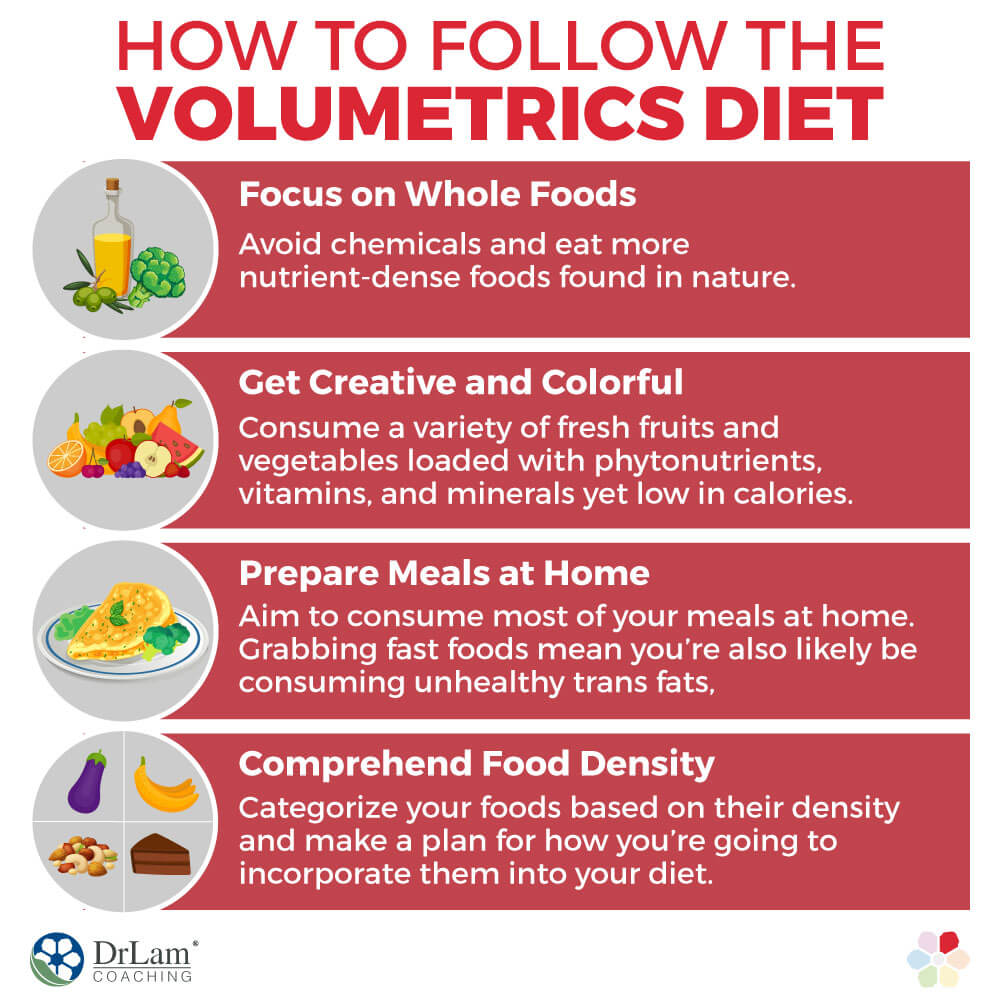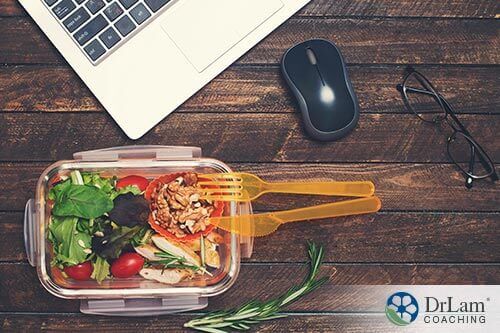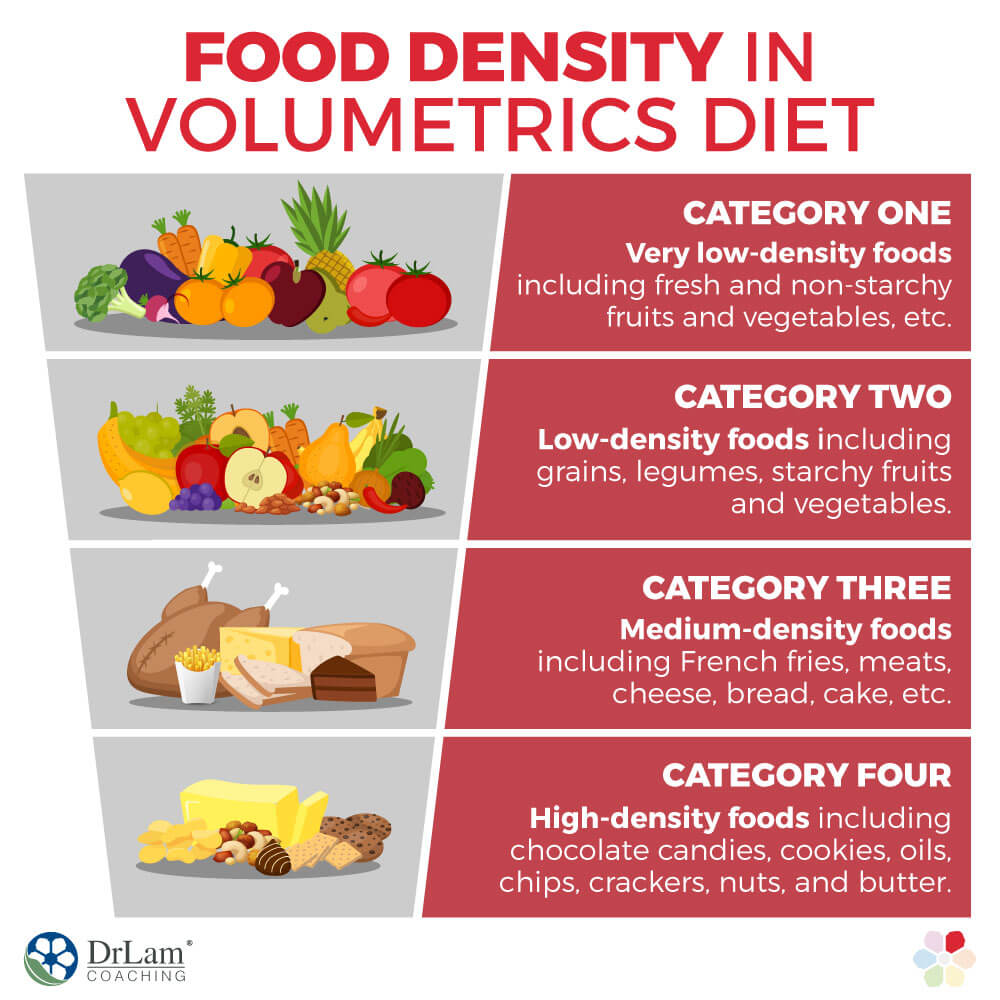 Everywhere you look in society today, you are constantly bombarded with advertisements, billboards, images, and programs aimed at helping you lose or brining you optimal health. Unfortunately, a lot of diet plans still focus on obsessing over calories while promoting chemical-laden protein bars and shakes, as well as other highly processed foods. The volumetrics diet instead focuses on consuming more nutrient-dense whole foods, which are naturally low in calories and loaded with phytonutrients, healthy fats, vitamins, and minerals. Whether you’re trying to lose weight or hoping to regain your energy and youth, it’s important to adopt a whole foods diet that is packed with all the nutrients your body needs for long-term optimal health.
Everywhere you look in society today, you are constantly bombarded with advertisements, billboards, images, and programs aimed at helping you lose or brining you optimal health. Unfortunately, a lot of diet plans still focus on obsessing over calories while promoting chemical-laden protein bars and shakes, as well as other highly processed foods. The volumetrics diet instead focuses on consuming more nutrient-dense whole foods, which are naturally low in calories and loaded with phytonutrients, healthy fats, vitamins, and minerals. Whether you’re trying to lose weight or hoping to regain your energy and youth, it’s important to adopt a whole foods diet that is packed with all the nutrients your body needs for long-term optimal health.
Although it may sound like basic chemistry, the volumetrics diet has truly been linked to lasting weight loss, along with enhanced mood and improved energy levels. Even if you eat the same amount of food, you’ll be filling your stomach with items that are naturally low in calories, therefore, your overall calorie and fat intake will automatically be lower. Thus, your body weight will begin to drop and your health overall is also likely to improve.
The volumetrics diet is based on the nutrient density of foods and drinks you consume. Nutrient density can be defined as the proportion of nutrients in the foods that you eat, in terms preventing health conditions and enhancing your overall wellbeing. For example, a doughnut has excessive amounts of refined sugar, unhealthy fats, and carbohydrates yet is low if not free from nutrients and is therefore, low in nutrient density. Whereas raspberries or blueberries are low in calories but loaded with nutrients and vitamins which promote health. By making better food choices and opting for whole foods bursting with vitamins and minerals, you’ll begin to feel healthier immediately, both physically and mentally. It’s important to realize that making changes to your everyday habits and routines may help you avoid a myriad of health conditions down the line. Although eating deep-fried treats and heavily processed junk food may not instantly cause health issues, your body will slowly begin to deteriorate over time. So, by choosing a nutrient dense diet, you’ll replenish your cells and dramatically improve your energy levels, which will leave you feeling at your peak.
If you’re trying to manage Adrenal Fatigue Syndrome (AFS) and up to this point, you haven’t found a diet that helps, the volumetrics diet may give you better results. As you start filling your body with natural foods found in nature, you’ll begin to consume less calories, without feeling deprived or irritable, and may see superior weight loss results. When you have AFS, it’s difficult to get out of bed in the morning let alone perform ordinary daily tasks. Moreover, you may find yourself constantly on edge and ready to snap at anyone who irritates you in any way. Therefore, it’s to essential avoid foods that may further aggravate your mood and mess with your hormones, such as empty carbohydrates, hydrogenated oils, or processed junk.
It may be difficult to see the link, but there is a direct cause and effect relationship between the foods you eat and the stress you endure in your everyday life. When your diet is loaded with doughnuts, such as coffee laden with excessive amounts of sugar or cream, and granola bars marketed as “healthy products,” your blood sugar levels are constantly spiking. In addition, you may feel constantly hungry, moody, and tired, or even experience prolonged lethargy. And whereas stress every now and then over something small is not a big deal, developing a lifestyle full of constant stress is extremely unhealthy.
 To combat stress, your adrenal glands, situated above your kidneys, produce the stress-fighting hormone cortisol, which quickly diminishes once the stress has passed. However, when your body remains in “flight-or-fight” mode for too long, you may end up disturbing your NeuroEndoMetabolic (NEM) stress response system, which can lead to Adrenal Fatigue. It may not sound so scary, but Adrenal Fatigue can lead to a number of life-disrupting symptoms including insomnia, headaches or migraines, indigestion, hyperthyroidism, high blood pressure, mild depression, cardiovascular health conditions, and the most common of all, excessive lethargy and the inability to complete normal tasks throughout the day.
To combat stress, your adrenal glands, situated above your kidneys, produce the stress-fighting hormone cortisol, which quickly diminishes once the stress has passed. However, when your body remains in “flight-or-fight” mode for too long, you may end up disturbing your NeuroEndoMetabolic (NEM) stress response system, which can lead to Adrenal Fatigue. It may not sound so scary, but Adrenal Fatigue can lead to a number of life-disrupting symptoms including insomnia, headaches or migraines, indigestion, hyperthyroidism, high blood pressure, mild depression, cardiovascular health conditions, and the most common of all, excessive lethargy and the inability to complete normal tasks throughout the day.
There is absolutely no question that the food and drinks you put into your body can impact your health, be it today, next week, or five years down the line. So, making the smart choice and trying the volumetrics diet may be the key to regaining your health and energy once again. Fruits and vegetables are loaded with antioxidants, vitamins, minerals, and other compounds that boost the neurotransmitters found in your brain, leading to better moods and immeasurable energy levels.
 Depriving yourself of your favorite peanut butter or chocolate bar may sound unfathomable, but clear evidence has shown that consuming nutrient-rich foods and fewer calories could put you on the right path to losing weight faster. Dieting is often seen as a short-term plan and will leave you feeling restricted, hungry, cranky, tired, or simply low in energy. If you’re trying to manage Adrenal Fatigue, a diet that leaves you tired and hungry is the last thing you need. However, if you follow the volumetrics diet properly and approach it one day at a time, you’ll quickly reap the benefits.
Depriving yourself of your favorite peanut butter or chocolate bar may sound unfathomable, but clear evidence has shown that consuming nutrient-rich foods and fewer calories could put you on the right path to losing weight faster. Dieting is often seen as a short-term plan and will leave you feeling restricted, hungry, cranky, tired, or simply low in energy. If you’re trying to manage Adrenal Fatigue, a diet that leaves you tired and hungry is the last thing you need. However, if you follow the volumetrics diet properly and approach it one day at a time, you’ll quickly reap the benefits.

Both potato chips and steamed broccoli topped with extra virgin olive oil may have the same calorie count, around 200, nonetheless, their nutrient densities are on opposite ends of the spectrum. Whereas potato chips are deep fried, heavily salted, and loaded with chemicals, steamed broccoli and extra virgin olive oil are whole foods bursting with crucial vitamins, minerals, and healthy fats. It’s so important to realize that you should be more concerned with the chemicals in your food than merely with the calories. This means that even though your “skinny” ice cream may have just 30 calories per scoop, the full-fat option made with organic milk, cream, and vanilla beans is much better for you, even if it is higher in calories. Consuming a low-calorie diet loaded with processed foods such as fat-free cookies, sugar-free ice cream, or 45 calorie bread toast is in no way healthy. These processed foods are high in chemicals and additives that slowly damage your body from the inside out. It’s much better to focus on avoiding chemicals and eating more nutrient-dense foods found in nature.
If you’ve decided to try the volumetrics diet, be creative with your calories and make them count. Fill your plate with more volume and less calories. Of course, you’ll want to ensure these are coming from whole foods and not heavily processed foods. Focus on low-density foods such as broccoli, kale, and other leafy greens. Consuming healthy fats is crucial but remember they do come with more calories per bite than say, a cucumber. Don’t eliminate fats completely since they’ll allow you to feel sated. Healthy whole food fats include extra virgin olive oil, organic coconut oil, avocados, walnuts, almonds, pumpkin seeds, sunflower seeds, cashews, pecans, hazelnuts, Brazil nuts, pine nuts, and flaxseeds. Moreover, make your breakfast, lunch, and dinner plates full of color. Consume a variety of fresh fruits and vegetables loaded with phytonutrients, vitamins, and minerals yet low in calories. Bananas, cranberries, blueberries, kale, eggplant, tomatoes, limes, grapefruit, and grapes can all be wonderful additions to your new healthy diet. When you begin following the volumetrics diet, you’ll soon have a lot more satisfaction after meals and more energy too.
 If you’re attempting the volumetrics diet, aim to consume most of your meals at home. Driving by your favorite fast food restaurant and grabbing a quick meal may be a lot easier, but you’re also likely be consuming unhealthy trans fats, hydrogenated oils, genetically modified ingredients, bleached flour, and heavily processed bread. Shockingly, some French fries have more than two dozen ingredients. Instead of grabbing a breakfast sandwich from the coffee shop on your way to work, prepare yourself a healthy nutrient-dense breakfast at home and aim to make your breakfast satisfying and enjoyable. When you have a satisfying breakfast, your blood sugar levels will leave you in a good mood for the rest of the day. For example, you’ll definitely be much better off opting for a spinach and broccoli omelet versus a couple doughnuts and a cup of coffee loaded with heavy cream and sugar.
If you’re attempting the volumetrics diet, aim to consume most of your meals at home. Driving by your favorite fast food restaurant and grabbing a quick meal may be a lot easier, but you’re also likely be consuming unhealthy trans fats, hydrogenated oils, genetically modified ingredients, bleached flour, and heavily processed bread. Shockingly, some French fries have more than two dozen ingredients. Instead of grabbing a breakfast sandwich from the coffee shop on your way to work, prepare yourself a healthy nutrient-dense breakfast at home and aim to make your breakfast satisfying and enjoyable. When you have a satisfying breakfast, your blood sugar levels will leave you in a good mood for the rest of the day. For example, you’ll definitely be much better off opting for a spinach and broccoli omelet versus a couple doughnuts and a cup of coffee loaded with heavy cream and sugar.
When it comes to the volumetrics diet, food can be placed into four categories based on density:

Category one: Very low-density food including fresh and non-starchy fruits and vegetables, non-fat milk, and broth-based soups.
Category two: Foods considered low-density including grains, starchy fruits and vegetables, breakfast cereals, legumes, low-fat meat products, and certain low-fat dishes such as chili or spaghetti.
Category three: Foods considered medium-density including French fries, pizza, ice cream, desserts, cheese, meats, salad dressing, pretzels, bread, and cake.
Category four: High-density foods including chocolate candies, cookies, oils, chips, crackers, nuts, and butter.
Once you understand the various categories into which commonly eaten foods can be placed, you should make a plan for how you’re going to incorporate them into your volumetrics diet. Focus on eating foods in category one and two while limiting foods in three and four. To the best of your ability, aim to eliminate category four completely so you can save the room in your stomach for low density food items instead. It may sound difficult, but it simply about finding better alternatives. Instead of snacking on a big bowl of deep fried heavily processed potato chips from category four, bake a sweet potato and enjoy it with some cinnamon on top. Interestingly, foods in category one are low-density, yet they have high water content.
Consuming cucumbers and iceberg lettuce will definitely fill up your stomach faster than eating almonds. Moreover, your cells will be replenished as nutrients and vitamins flow into your bloodstream and you’ll feel like your energy is skyrocketing. With the volumetrics diet, it’s crucial to drink an adequate amount of water so your organs and cells stay hydrated. Often, a feeling of hunger is, in fact, just your body’s way of telling you that you’re thirsty. Drinking plenty of water and focusing on foods in category one and two will make a noticeable difference to your cravings and hunger pangs. Water is the building block of cells, therefore, by increasing your water intake in lieu of high-density drinks—such as coffee loaded with cream and sugar or juice full of refined sugar or artificial sweeteners—you’ll lower your calorie intake without feeling deprived of fluid. On top of that, unlike other beverages, water won’t cause further cravings. This goes back to increasing your intake of low-density foods loaded with nutrients and vitamin and making them the building blocks of your body.
 Give the volumetrics diet a try and be sure to stick with whole foods found in nature. When you start making gradual changes to your diet—which may have previously been loaded with sugar, unhealthy fats, oils, or heavily processed foods—you’ll undoubtedly see results. However, it’s important to be patient and consistent with your efforts. Also, before starting any new nutritional program, it’s a good idea to consult with a healthcare professional, especially if you’re suffering from Adrenal Fatigue. Your new diet could possibly improve your AFS, but it could also backfire causing you to take a step back.
Give the volumetrics diet a try and be sure to stick with whole foods found in nature. When you start making gradual changes to your diet—which may have previously been loaded with sugar, unhealthy fats, oils, or heavily processed foods—you’ll undoubtedly see results. However, it’s important to be patient and consistent with your efforts. Also, before starting any new nutritional program, it’s a good idea to consult with a healthcare professional, especially if you’re suffering from Adrenal Fatigue. Your new diet could possibly improve your AFS, but it could also backfire causing you to take a step back.
Finally, your diet shouldn’t leave you feeling deprived, tired, or cranky. If anything, you need food as a source of energy. Thoughts of hunger or eating the wrong foods may leave you stuck in bed all afternoon. Remember to make the right choices and you’ll see a dramatic difference in no time.
Not only does the volumetrics diet work, it can work wonders! It has been found to reduce body weight, boost energy, and leave your stomach satisfied. You’ll find yourself naturally regaining your mood and energy.
